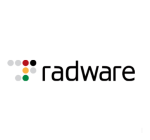What needs improvement?
All the cyber security vendors and their products need improvement, including F5 and this product. No one is 100% secured, because attacks are more sophisticated now, and the hackers have become more advanced.
Recently, I've seen one of the attacks on this particular network, where they managed to bypass its multi-factor authentication. They were able to bypass that level of security, and they managed to get into the network.
Every cyber security vendor needs to be proactive. No one is perfect, so even the rank one cyber security vendors should also keep their eyes open all the time.
It would also be better if F5 provided free product training for F5 BIG-IP Local Traffic Manager (LTM), so end customers could have more awareness and understanding of the product, so they'll know how to use it.
Our level of requirements, usage, and scalability are being met by this product. If we needed additional features, or if we needed additional licenses, all we need to do is just buy the additional features or licenses, so we currently don't have any additional features we'd like to be included in the next version of F5 BIG-IP Local Traffic Manager (LTM).
For how long have I used the solution?
My experience with F5 BIG-IP Local Traffic Manager (LTM) is a total of four years now. We have customers, e.g. from the government, who prefer this solution. We also propose it to them because they have a bigger environment, compared to the environment size of private companies. We have customers from the government, e.g. from the Department of Communication.
What do I think about the scalability of the solution?
F5 BIG-IP Local Traffic Manager (LTM) is scalable and secure, so we propose this solution to customers with bigger environments, e.g. those in the government.
How are customer service and support?
I'm rating F5 technical support a nine out of ten.
Which solution did I use previously and why did I switch?
We used Fortinet, but what we were getting from F5 BIG-IP Local Traffic Manager (LTM) was always more than what we got from Fortinet, even when using FortiWeb and Forti WAF cloud as a service, and even when considering the functionality of each product.
How was the initial setup?
F5 BIG-IP Local Traffic Manager (LTM) is more complex to implement. Implementation of this product would be much easier if you have the right service, e.g. consultation services included, support from the distributor or directly from the vendor itself, or a certified partner. Having consultation and support will help make it much easier for the end customer during implementation, but the implementation process for this product is more complex than Fortinet.
What's my experience with pricing, setup cost, and licensing?
The cost is high for this product, so small customers, e.g. those in a private bank, won't be able to afford F5 BIG-IP Local Traffic Manager (LTM), and they also don't really need the kind of support and functionality that this product gives.
For customers who are in the government, we propose F5 BIG-IP Local Traffic Manager (LTM) despite its cost being high, because they'll really need it. They host their applications in the cloud, and in private data centers, e.g. private cloud services, so they'll need the kind of protection that this product provides.
It depends on customer. Whenever we see that customers can't afford, or the environment is smaller, we propose Fortinet, or some other solution that's cheaper than Fortinet. We don't propose F5 BIG-IP Local Traffic Manager (LTM) to them.
Which other solutions did I evaluate?
I was able to evaluate Fortinet.
What other advice do I have?
We have a partnership with Fortinet, as a reseller of F5 BIG-IP Local Traffic Manager (LTM) and other F5 products. We are also a reseller of Cisco and Forcepoint products, though we just started with Forcepoint, so we haven't been doing much with their products currently.
My advice to users of F5 BIG-IP Local Traffic Manager (LTM), including people who are thinking of implementing this product, is that they need to have product awareness. What we are seeing in our government customers is that they don't have awareness, in particular, they don't know what they're using, which is why they're having issues. They need to understand the product first, and they need to go and get the training first, but they are hesitant to pay for the training.
Unlike Fortinet who provides free training, F5 doesn't. Ever since the pandemic, Fortinet has provided free training, but certification is not free. If F5 can provide free training for F5 BIG-IP Local Traffic Manager (LTM), that would be better.
My rating for F5 BIG-IP Local Traffic Manager (LTM) is eight out of ten.
Disclosure: My company has a business relationship with this vendor other than being a customer.



















